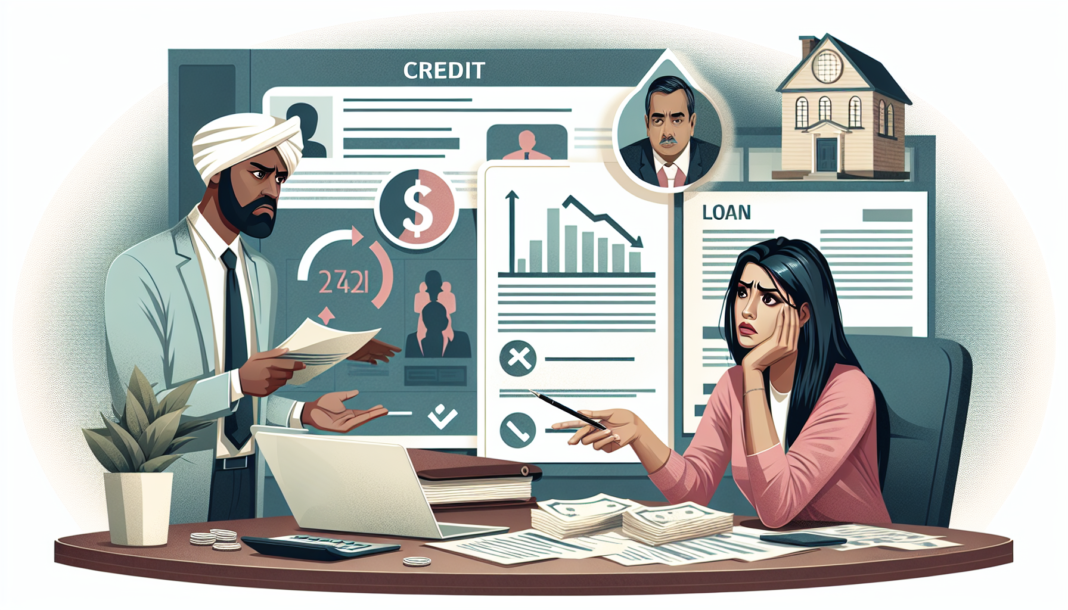Understanding Bad Credit Loans: Your Guide to Financial Recovery Understanding Bad Credit and Your Loan Options
Hey there! So, you’ve found yourself in a bit of a pickle with your credit score, huh? Don’t worry; you’re not alone. Many people face challenges with bad credit, and it can feel overwhelming when you need a loan. But let’s break it down together, so you can figure out your options without feeling stressed.
What is Bad Credit, Anyway?
First things first, let’s talk about what bad credit actually means. Your credit score is like a report card for how you’ve handled borrowing money in the past. Scores typically range from 300 to 850, and anything below 580 is often considered “bad credit.” This could be due to late payments, defaults, or high credit utilization.
Here’s a quick snapshot of credit score ranges:
– **300-579**: Poor
– **580-669**: Fair
– **670-739**: Good
– **740-799**: Very Good
– **800-850**: Excellent
Why Does Bad Credit Matter?
Having bad credit can affect several aspects of your financial life. For instance:
– **Loan Approval**: Lenders may deny your application outright.
– **Higher Interest Rates**: If you do get approved, expect to pay more in interest.
– **Limited Choices**: Your options for loans and credit will be more restricted.
It can feel a bit like a vicious cycle, but don’t lose hope! There are still ways to secure a loan, even with bad credit.
Exploring Loan Options for Bad Credit
When you need money but have bad credit, the first step is to understand your options. Here’s a handy list to consider:
1. Personal Loans from Credit Unions
Credit unions are often more flexible than traditional banks. They tend to focus on community and member relationships, which can be a huge advantage. Here’s what to do:
– **Research Local Credit Unions**: Look for ones that offer personal loans to members with bad credit.
– **Become a Member**: You might need to join the credit union, which can often be done with a small fee.
– **Apply for a Loan**: Present your situation honestly; they might offer you better terms than a bank.
2. Peer-to-Peer Lending
This is a slightly newer option that connects borrowers directly with individual investors. Websites like Prosper and LendingClub can help you here. Here’s how to navigate this:
– **Create a Profile**: You’ll need to share your financial story.
– **Set Your Loan Amount and Purpose**: Be clear about why you need the money.
– **Review Offers**: Investors will bid on your loan, and you can choose the best offer.
3. Secured Loans
If you have an asset like a car or savings account, a secured loan might be your best bet. This type of loan is backed by collateral, meaning you’re less of a risk to lenders. Here’s the process:
– **Identify Your Asset**: Determine what you can use as collateral.
– **Shop Around**: Compare offers from different lenders to find the best interest rate.
– **Understand the Risks**: If you default, you could lose your asset, so be cautious.
4. Payday Loans (Use with Caution)
These are short-term loans that can provide quick cash, but they come with very high fees and interest rates. While they might seem tempting, they can lead to a debt trap if not managed properly. If you must consider this option:
– **Read the Fine Print**: Understand all fees and repayment terms.
– **Only Borrow What You Can Repay**: Make sure you’re confident you can pay back the loan quickly.
5. Family and Friends
Sometimes the best option is right under your nose! Borrowing from family or friends can be a more forgiving way to get the help you need. Here’s how to approach it:
– **Be Honest**: Share your situation openly.
– **Discuss Terms**: Agree on repayment terms to avoid misunderstandings.
– **Put It in Writing**: For clarity, write down the terms of the loan.
Steps to Take Before Applying for a Loan
Before you jump into applying for loans, take a few moments to prepare yourself. Here’s a quick checklist to help you out:
Step 1: Check Your Credit Report
– Obtain a free copy of your credit report from AnnualCreditReport.com.
– Look for errors or inaccuracies and dispute them if necessary.
Step 2: Budget Wisely
– Calculate how much you can afford to borrow and repay.
– Factor in all potential interest rates and fees.
Step 3: Gather Documentation
– Have your proof of income, bank statements, and identification ready to streamline the application process.
Step 4: Shop Around
– Don’t settle for the first loan offer. Compare terms from various lenders to get the best deal.
Final Thoughts
Navigating loans with bad credit can feel daunting, but it’s not the end of the road. With careful planning and the right approach, you can find a loan option that suits your needs. Remember to stay informed, budget wisely, and always read the fine print before signing any agreements.
If you have any questions or want to share your own experiences with bad credit and loans, feel free to reach out. We’re all in this together, and sometimes just talking about it can make a world of difference!


